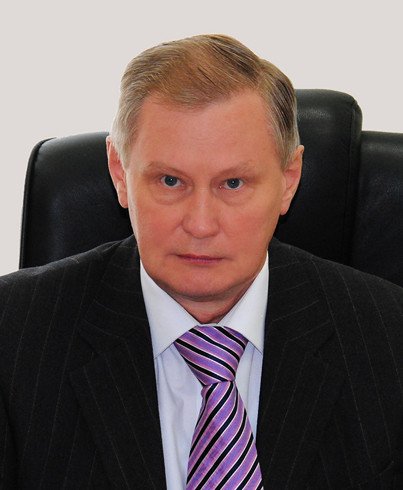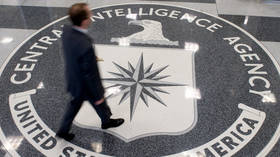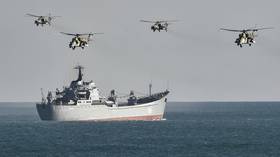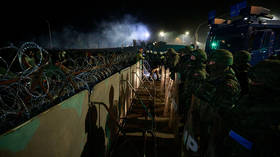Is Russia really preparing an offensive against Ukraine?
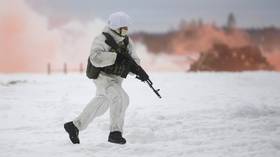
The West shouldn't be concerned about Russia launching military exercises near its own border. Here’s why.
On January 11, about 3,000 servicemen of the Western Military District launched military exercises at the combined arms training grounds in Voronezh, Belgorod, Bryansk and Smolensk regions, not far from Russia’s border with Ukraine and Belarus. The move has been a source of anxiety in the West with the US demanding an explanation on the exercises.
Up to 300 units of military equipment are used in the drills, including T-72B3 tanks and BMP-2 infantry fighting vehicles. But is that a lot? Let’s recall that the strength of a motor rifle regiment during wartime is about 2,500 men. While 300 tanks and IFVs is well below the strength of a regular tank division.
Therefore, we can safely say that the exercise in Russia’s western regions involves nothing more than the equivalent of a reinforced motor rifle regiment. A single regiment should not – and cannot – cause large-scale geopolitical tensions.
In addition, any military training activities involve a considerable expenditure of material resources. Thus, as a general rule, they are conducted in accordance with the operational training plan of the Russian Armed Forces, as well as the individual training schedules of Russia’s five military districts. It would be highly unusual to hold separate military drills without any pre-planning.
Now, to address the geographical proximity of the exercise areas to Russia’s western borders that has traditionally bothered the West: the fact is, military training operations are carried out strictly at pre-existing training grounds, which are few and far between in the European part of Russia – besides, their maximum capacity rarely exceeds the strength of a regiment. Moreover, it is unlikely that new training ranges will be created in the foreseeable future, since there is virtually no available land in the western regions, and there are considerable issues associated with exercising the power of eminent domain (land acquisition). Therefore, the West’s repeated demands not to hold exercises near Russia’s western borders would be difficult to comply with, even if Moscow wanted to, since Russia simply has no other alternatives in that part of the country.
On Tuesday, US State Department spokesman Ned Price said that Washington expects Russia to provide some clarification with respect to the military exercises “close to the Ukraine border” or to cease them entirely – as part of the effort to de-escalate tensions around Ukraine.
“De-escalation in this context would call for Russian troops to return to their barracks, for these exercises to either be explained or to come to a halt, for this heavy weaponry to return to its regular storage locations,” Price said.
Wendy Sherman, US Deputy Secretary of State, who led the American delegation at the Russia-US consultations on security guarantees in Geneva, said that, by sending the troops located on the border with Ukraine back to barracks, Russia would prove that it had no plans to invade Ukraine.
Russia in response pointed out that its troops are deployed within the country’s national territory. According to Foreign Minister Sergey Lavrov, the West has gone to extremes with its demands.
“We are categorically opposed to the developments, where we are requested to send troops back ‘to the barracks’ on our own soil, yet simultaneously the Americans, Canadians, British have almost on a permanent basis ensconced themselves – under the guise of a very provisional rotation – in the Baltic States and in the countries of northern Europe, and create military bases around the Black Sea. What’s more, the British are building a base in Ukraine: they are setting up a base in the Sea of Azov,” Lavrov said during a media conference on Friday. “This is an inadmissible approach.”
In recent months, the US and NATO have repeatedly accused Russia of planning an invasion of Ukraine. Even specific dates were given in the media for when the Russian troops would allegedly strike. However, there is hardly any evidence to back up this allegation.
Let’s consider just a couple of examples. Example number one: if there were to be a military operation against Ukraine – hypothetically – it would inevitably involve Russia’s Aerospace Forces, since warfare in the 21st century cannot rely only on motorized infantry and tanks alone and has far more advanced means at its disposal.
If the Russian Aerospace Forces were to be involved, we’d have to talk about their involvement in terms of military missions they’d be assigned to carry out, let’s say, 30 missions per regiment – and that’s at the early stages of the hypothetical conflict.
In order to complete these missions, all of the Russian Aerospace Forces’ advanced airfields, as well as air bases, would have to have a sufficient supply of air weapons and munitions, fuel, equipment, food and other material resources to support these operations.
It’s hard to even imagine how many air-dropped bombs each regiment would require for these 30 missions. That would be hundreds of tonnes of munitions, no exaggeration. We’d also have to count in boxes and boxes of ammo for all the air guns and cannons.
If we were to consider the fuel required to support such an operation, let’s remember that each tactical aircraft burns an enormous amount of fuel, and each full tank carries about 12 to 14 tons. For tactical calculations, it is taken that one aircraft consumes 0.75 of a full tank and spends 0.85 of one standard ammunition allowance per flight. Taken together, that would round up to some huge numbers.
Modern intelligence, equipped with satellite capabilities and advanced surveillance technologies, would never miss all that cargo being moved around.
Example number two: if such an operation were to take place, we’d also have to count in the ammunition for all the artillery and multiple-launch rocket systems. Just one mission requires five to six standard ammunition rounds per gun.
Standard ammunition for a 152 mm howitzer-gun alone consists of 60 shells. Each shell comes in a box, so six standard ammunition rounds come in a total of 360 big wooden crates. Each self-propelled artillery regiment carries 54 such guns. You can now imagine the number and size of all the boxes of ammunition required to support just one artillery regiment during one mission.
But let’s be realistic, no military operation is ever that short, and, if one were really to start, each regiment would have to have enough ammo to support at least 30 days of action – that is, of course, if we are talking about a serious military operation. In that case there would have to be a massive logistical operation underway delivering all that ammo using railroads.
These two examples alone give some idea of what even a fraction of the material support required to sustain a serious offensive would look like. In reality, the numbers and quantities would be a lot higher. Such hardware support is essential for the success of any military operation. Furthermore, it is not just the use and potential losses of equipment during combat operations that one must take into account, but also the material reserves that need to be built up by the end of the operation.
And if no one can actually see such massive preparations on the ground or by means of satellite surveillance, there is no reason to believe that Russia is in any way preparing to start a war any time soon.
The statements, views and opinions expressed in this column are solely those of the author and do not necessarily represent those of RT.
